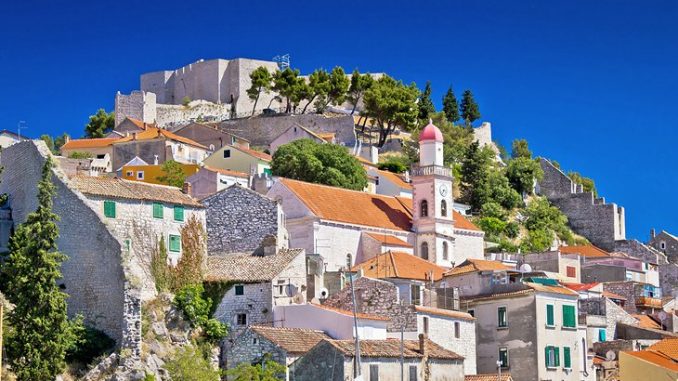
Croatia attractions and luxury tours? Connected to the mainland of Croatia by a toll bridge, Krk is the largest island in the country. The island is well developed and boasts plenty of infrastructure for tourism as well as an airport that is open between April and October. Most tourists base themselves out of Krk Town, a medieval walled city with a bustling seaside promenade and historical attractions such as the 12th-century St. Mary’s Cathedral and Frankopan Castle. Visitors can also explore the island’s many secluded beaches and authentic Mediterranean fishing villages or indulge in the wine and olives the region is known for.
If there is a place where party goers, nature lovers, and adrenaline addicts coexist in Croatia, then it is none other than Makarska. Nestled right between Biokovo mountain range and Makarska Riviera, this is a place of everything rocking and everything tranquil. For beach bums, this is a top tourist attraction in Croatia because of the stunning pebbly beaches. For adrenaline addicts, there’s paragliding, rock climbing, mountain biking, hiking, windsurfing, and more. For party-goers, some exquisite restaurants and bars do the magic, while for the individual types, the nature lovers, a relaxing stroll along the waterfront spells all the magic. Those who drop in during the seasons, a vibrant nightlife becomes the reason to die for.
The Baska Voda Summer encompasses a range of cultural events from early July through to September. These include assorted concerts, small theatre events, and other open air activities – once again, check locally for full details. Placed at the foot of the mountain Biokovo, expect glorious views of the sea and the charming town, backdropped by a spectacular mountain range. It offers a stunning contrast at sundown or sunset, as the colours of the rocks and buildings seem to change shades almost every minute in response to the ebbing strength of the sun’s rays.
Island Hvar and especially Hvar town is one of the most popular attractions in Croatia. Olive groves, fruit orchards, and lavender fields make up a large part of the agricultural landscape. Hvar town, set in a picturesque natural bay, with the Pakleni island chain protecting it to the south, is a popular port for yachts sailing around the Adriatic, especially in the summer months. Starigrad, the oldest village on the island, and Jelsa, as well as a smattering of small villages, dotting the coast or nestled in the lush interior are also well worth a visit. See even more info at click here.
Zadar’s car-free Old Town is built on a small peninsula jutting out onto Croatia’s Dalmatian coast. Said to be the country’s oldest continually inhabited city-it can trace its roots back as far as the Stone Age-its top tourist attractions are its many fine Romanesque churches, most of them built between the 9th and 13th centuries and filled with superbly preserved religious paintings and ornate golden treasures. Be sure to check out the 9th-century pre-Romanesque Church of St. Donatus; the 11th-century Church of St. Mary; and the Cathedral of Anastasia and the Church of St. Chrysogonus, both from the 12th century. Other things to do include visiting the Museum of Ancient Glass, as well as two popular modern installations, the Sea Organ and the Greeting to the Sun, both on the seafront close to the tip of the peninsula.
